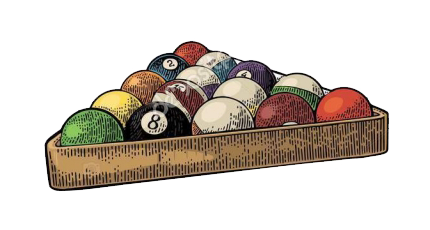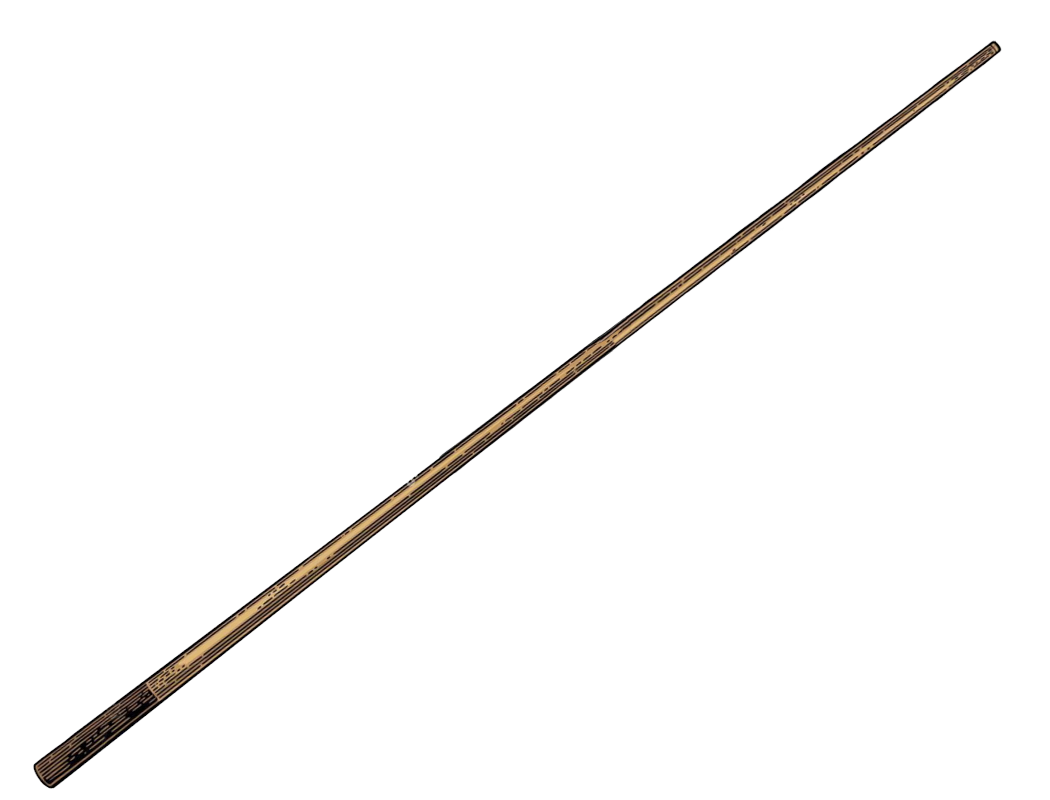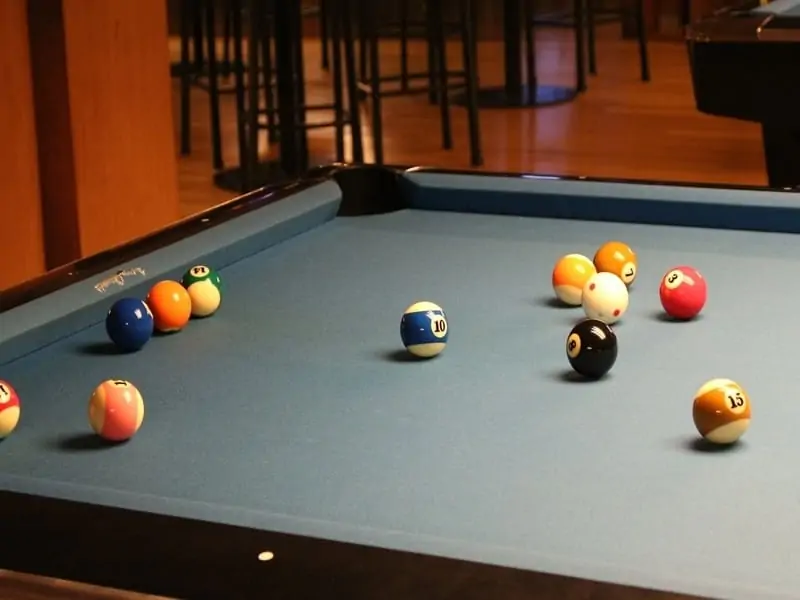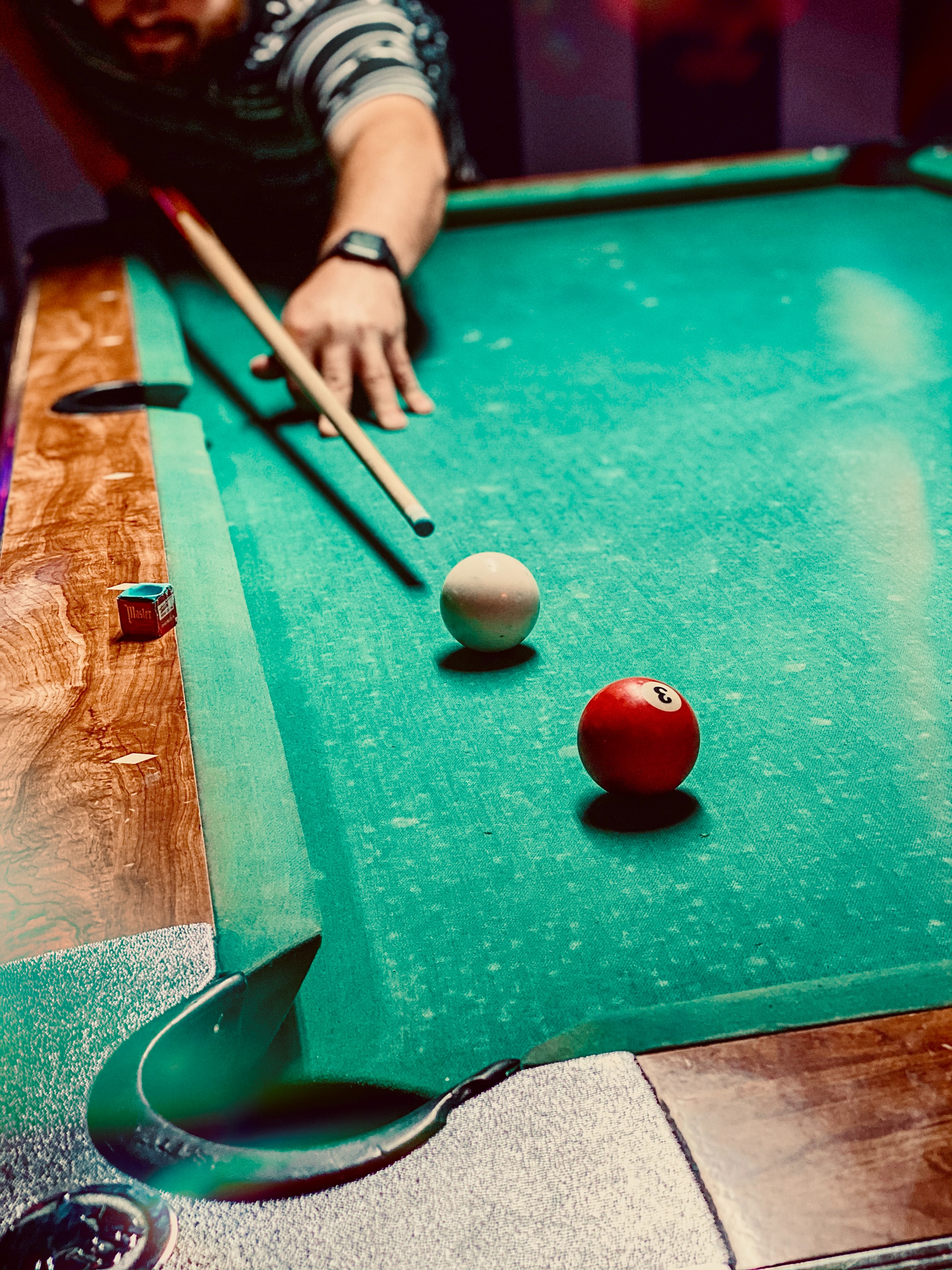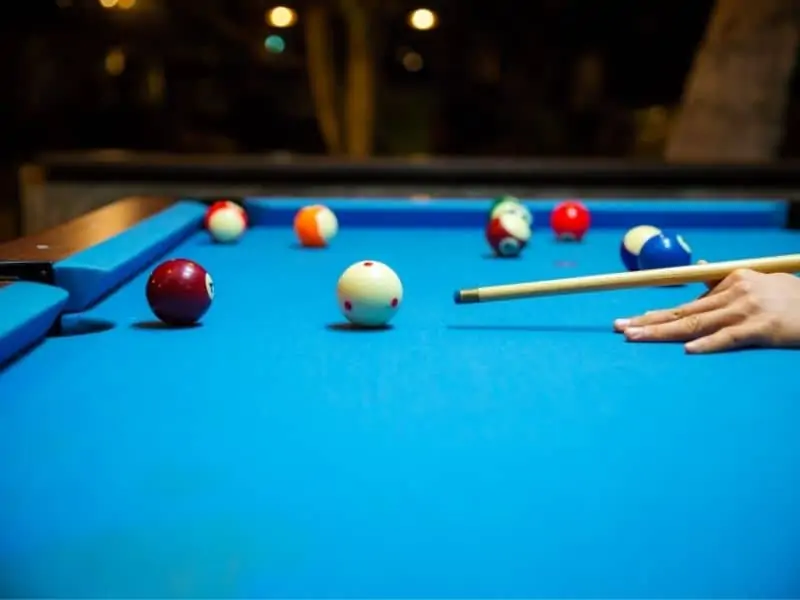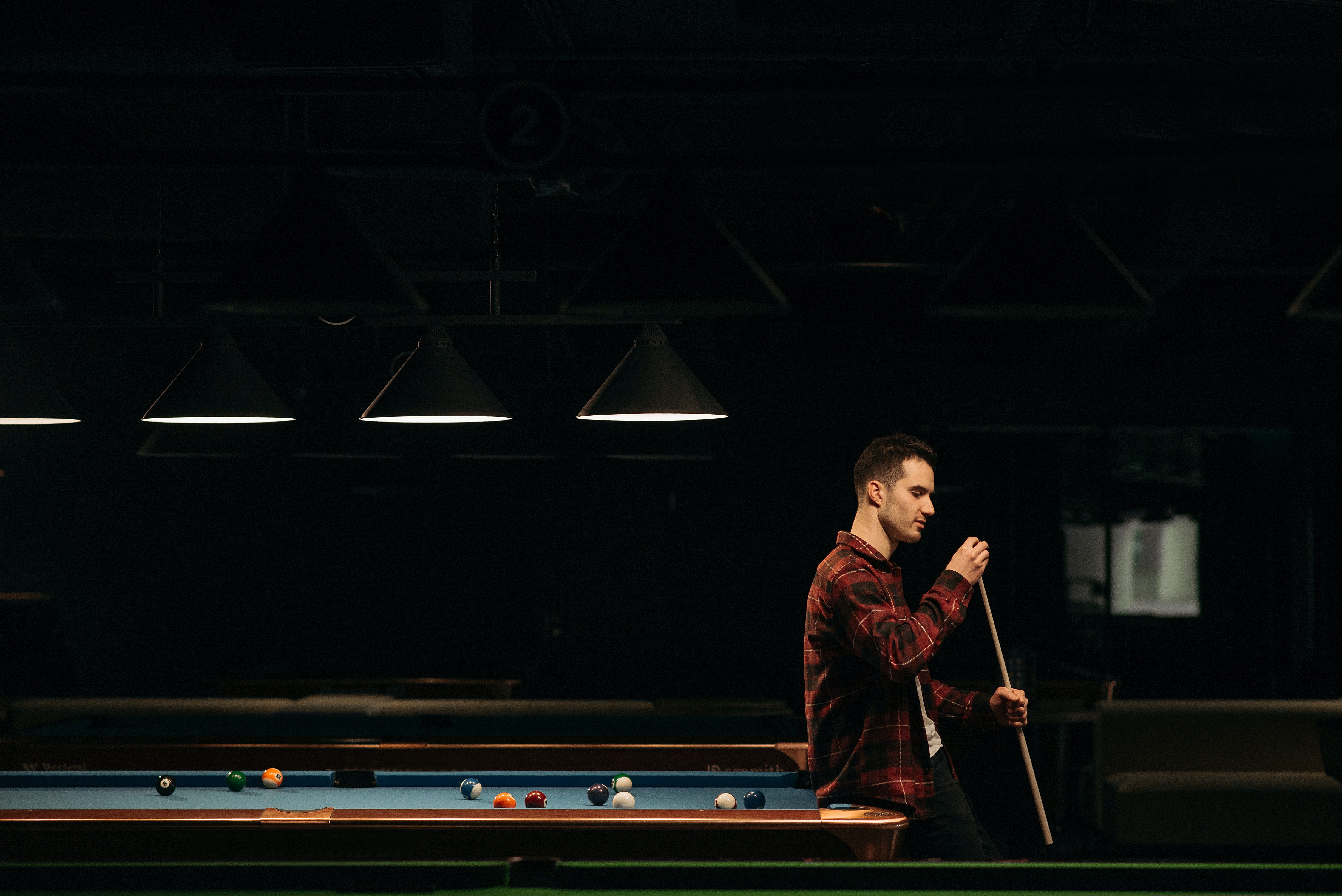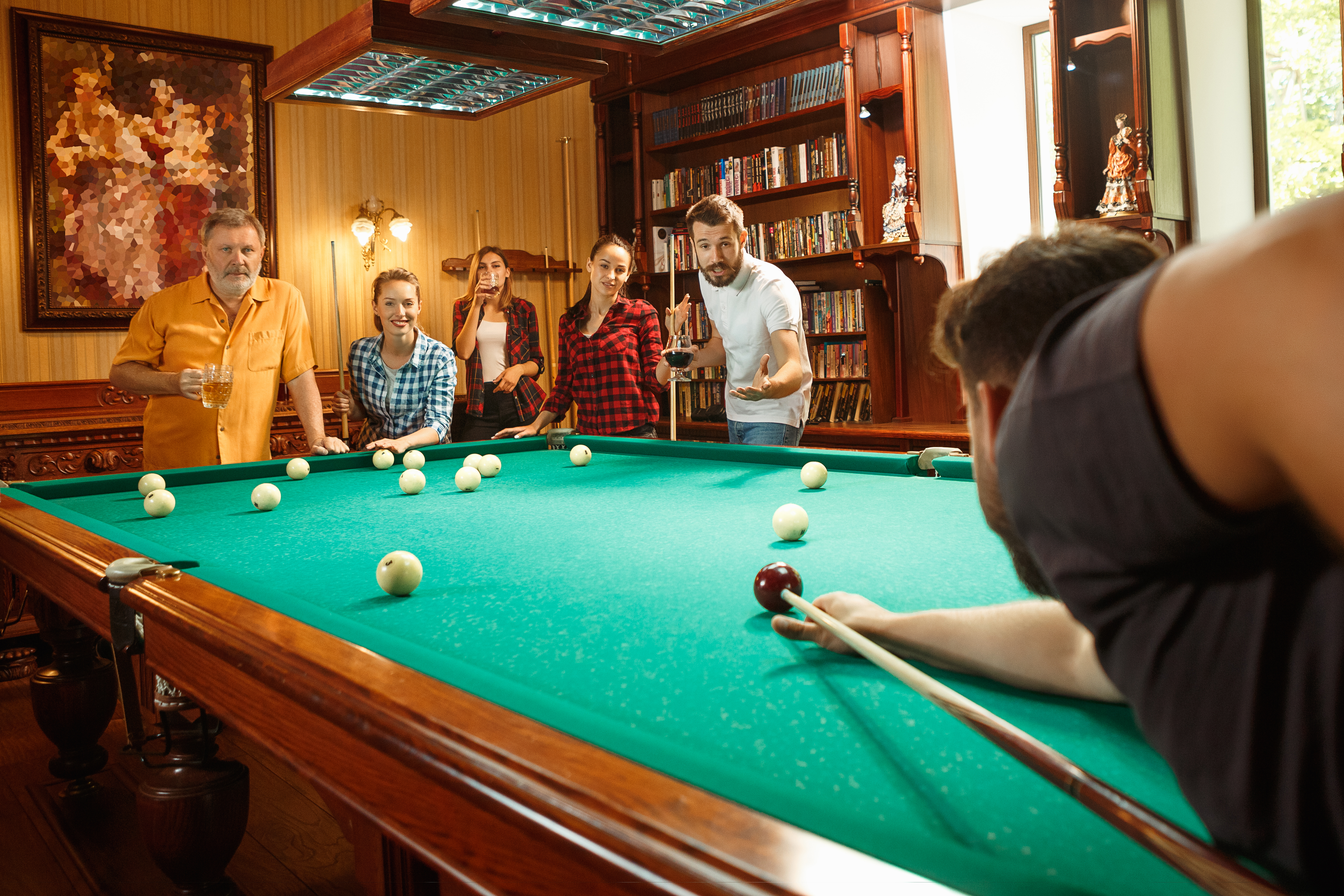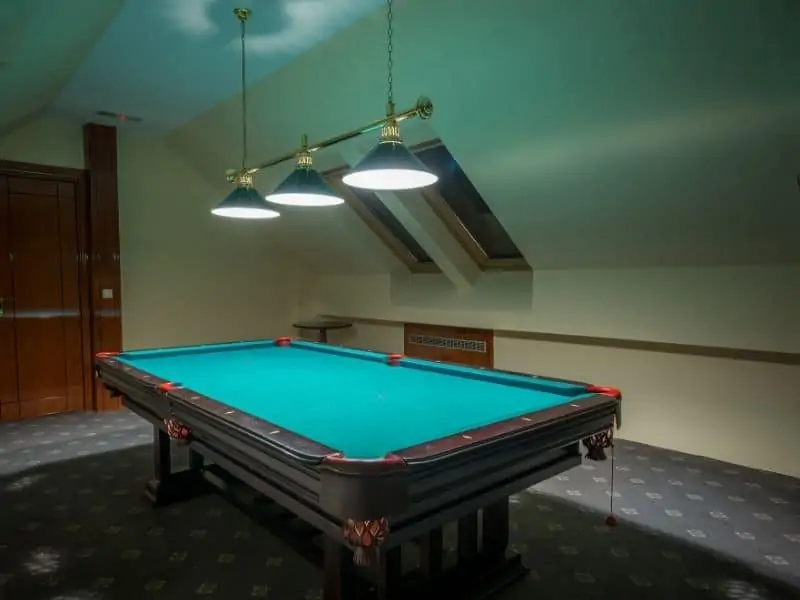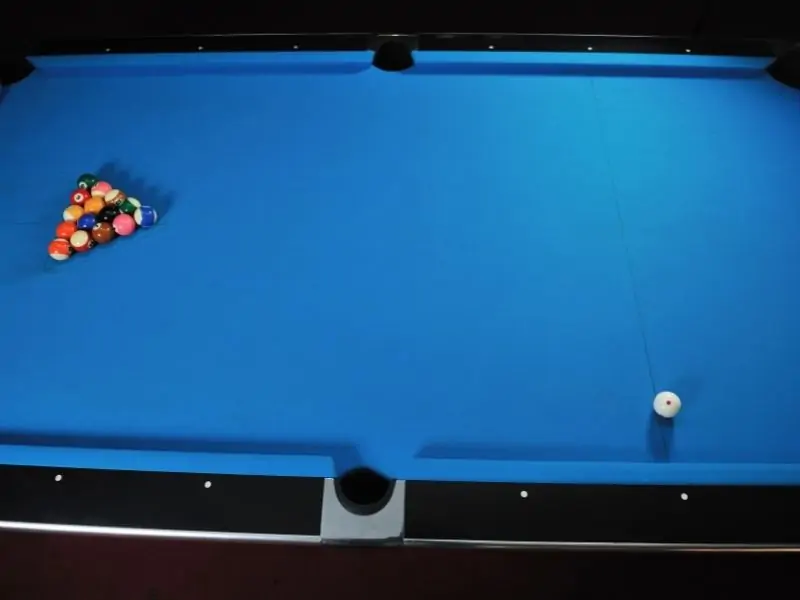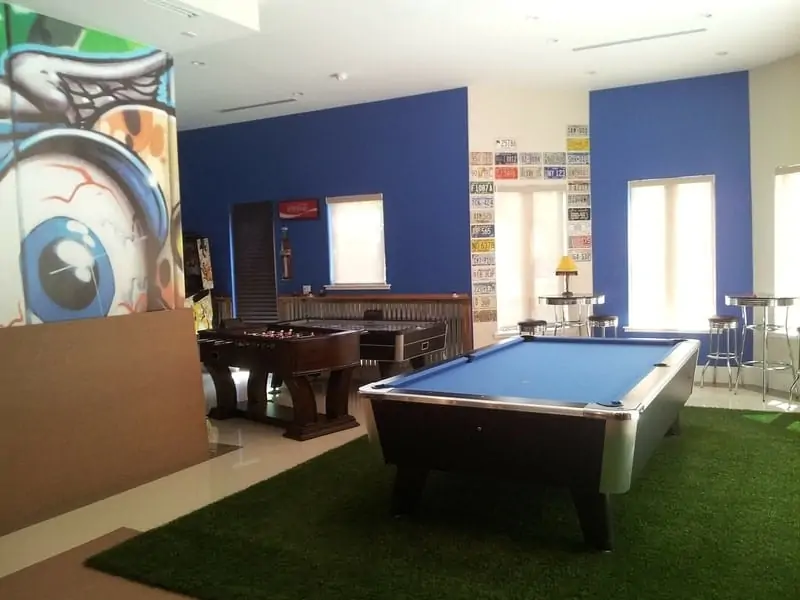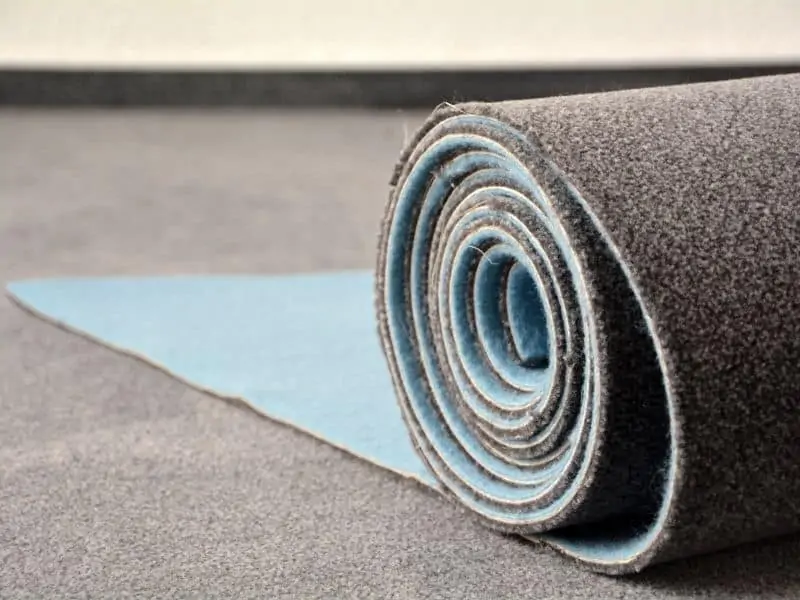If you’re brand new to the game of pool, you may be unfamiliar with the colors and numbers of billiard balls. But don’t worry. They’re not too complicated and once you play for a while, you’ll be able to recognize them all immediately without even having to think about it.
One of the first things you should know is how many billiard balls come in a set. A standard set of pool balls consists of 15 object balls and a cue ball.
The cue ball is the solid white ball within the set. It is typically the only ball that makes contact with your pool cue and is used to knock the other object balls into the pool table pockets. It has no number and no markings at all, therefore its easily distinguishable from the other balls on the table.
The other balls within the set are called object balls. These are the colored and numbered balls that make up a set of pool balls. They are numbered 1-15. Numbers 1-8 are solid colored balls, meaning the whole ball is one color except for the where it is numbered. And number 9-15 are striped balls. The striped balls have a stripe of color around them with the rest of the ball being white.
These two different color patterns make it easy to tell them apart when playing pool.
Below we’re going to take a look at solids and stripes so you can know what color represents what number ball.
Solids & Stripes
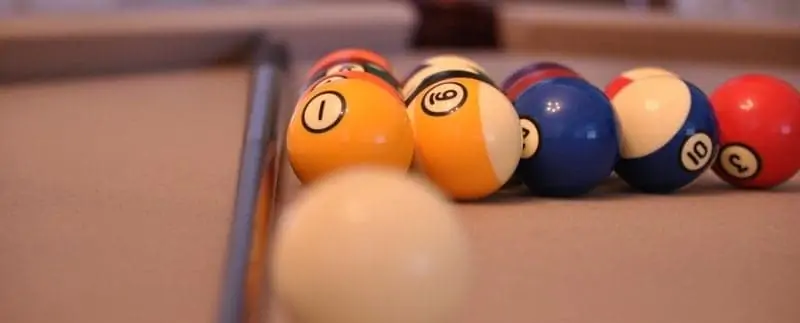
Balls numbered 1-8 are solids. Numbers 9-15 are stripes.
Here is a table showing each numbered ball and its corresponding color.
| Number | Color |
|---|---|
| 1 | Yellow |
| 2 | Blue |
| 3 | Red |
| 4 | Purple |
| 5 | Orange |
| 6 | Green |
| 7 | Maroon/Brown |
| 8 | Black |
| 9 | Yellow and White Stripes |
| 10 | Blue and White Stripes |
| 11 | Red and White Stripes |
| 12 | Purple and White Stripes |
| 13 | Orange and White Stripes |
| 14 | Green and White Stripes |
| 15 | Maroon/Brown and White Stripes |
| Cue | White |
Other Types of Billiards
Keep in mind that there are many different types of billiard games and each one has its own set of balls. Some of the more popular ones are carom, snooker, and British style pool. Lets take a quick look at them now.
Carom
Carom games such as straight-rail, three-cushion, balkline, and five pins make use of only three balls: a red object ball, one solid white cue ball for player one, and another cue ball that is white with a dot on it, or yellow, for player two. A second object ball, usually blue, is used for the game of four ball. Carom balls are also not numbered and are bigger in diameter than standard pool balls.
Snooker
A snooker ball set consists of 21 balls total. There are 15 red balls, a white cue ball, and 6 other object balls usually being yellow, green, brown, blue, pink, and black. Each color ball has a different point value assigned to it.
Here what each ball is worth in terms of points:
- Red - 1 Point
- Yellow - 2 Points
- Green - 3 Points
- Brown - 4 Points
- Blue - 5 Points
- Pink - 6 Points
- Black - 7 Points
Most of the time carom balls are not numbered. However, it is possible to find sets for amateur use that are numbered with their point value on them.
British Style Pool (Blackball)
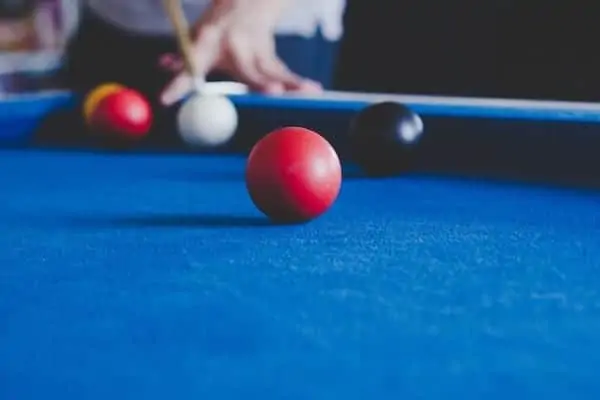
British style pool is another billiard game that makes use of 15 object balls and a cue ball. There are 7 red balls, 7 yellow balls, and a black 8-ball. No other ball is numbered besides the 8-ball. British style billiard balls are also noticeably smaller than standard American pool balls. The industry standard for American pool balls is 2 1/4” diameter while some British style billiard balls are made as small as 2” with the cue ball being even smaller at around 1 7/8”.
In Conclusion
Keep in mind that there are many different types of “cue sports” and each one has its own set of balls, rules, and regulations. And while there are lots of different types of billiard games that you can learn and play, pool is by far the most popular, at least in America. By taking the time to learn your solids and stripes you can become one step closer to becoming the pool shark you always wanted to be. I hope this article has been helpful. Thanks for reading!
